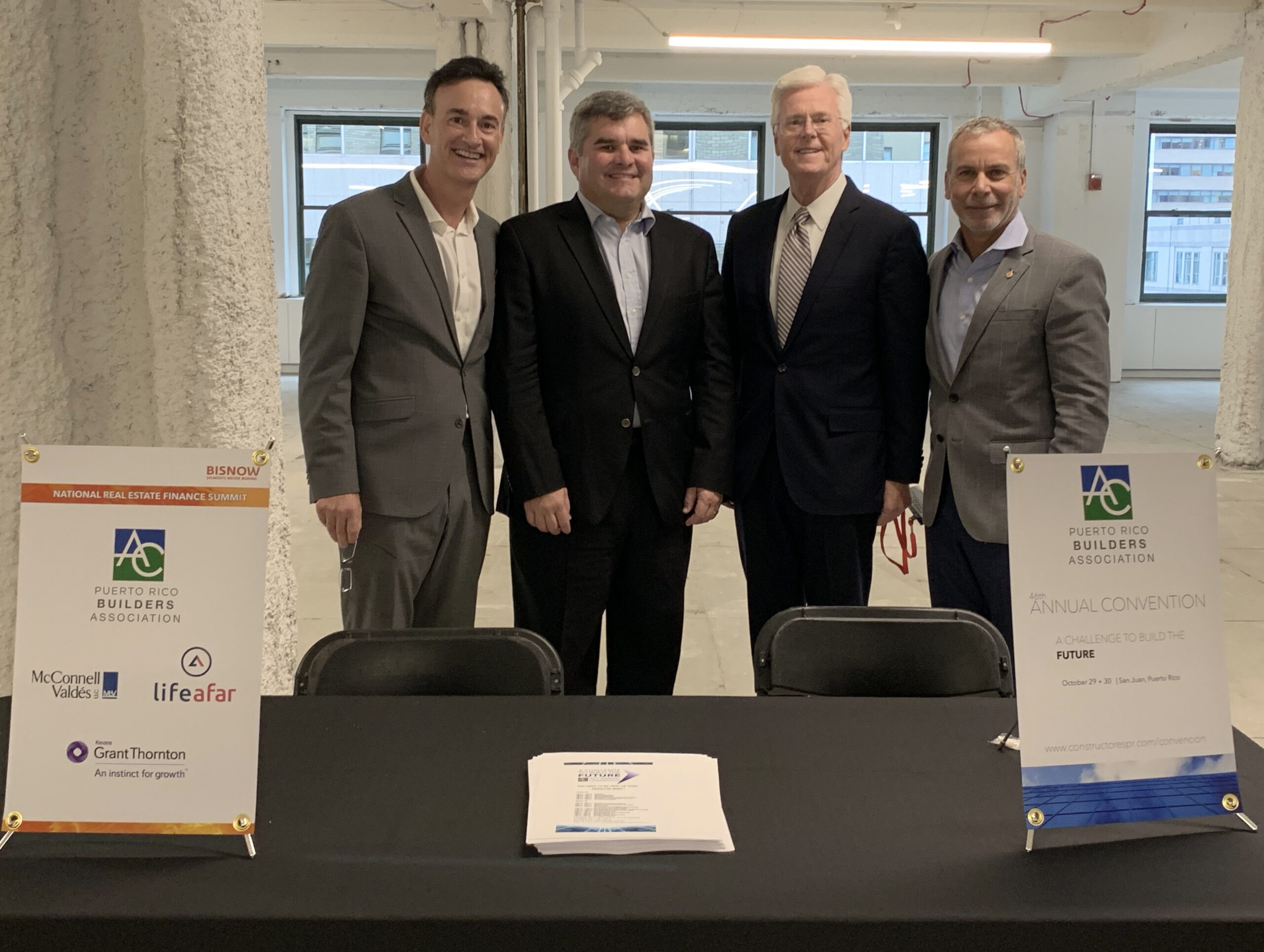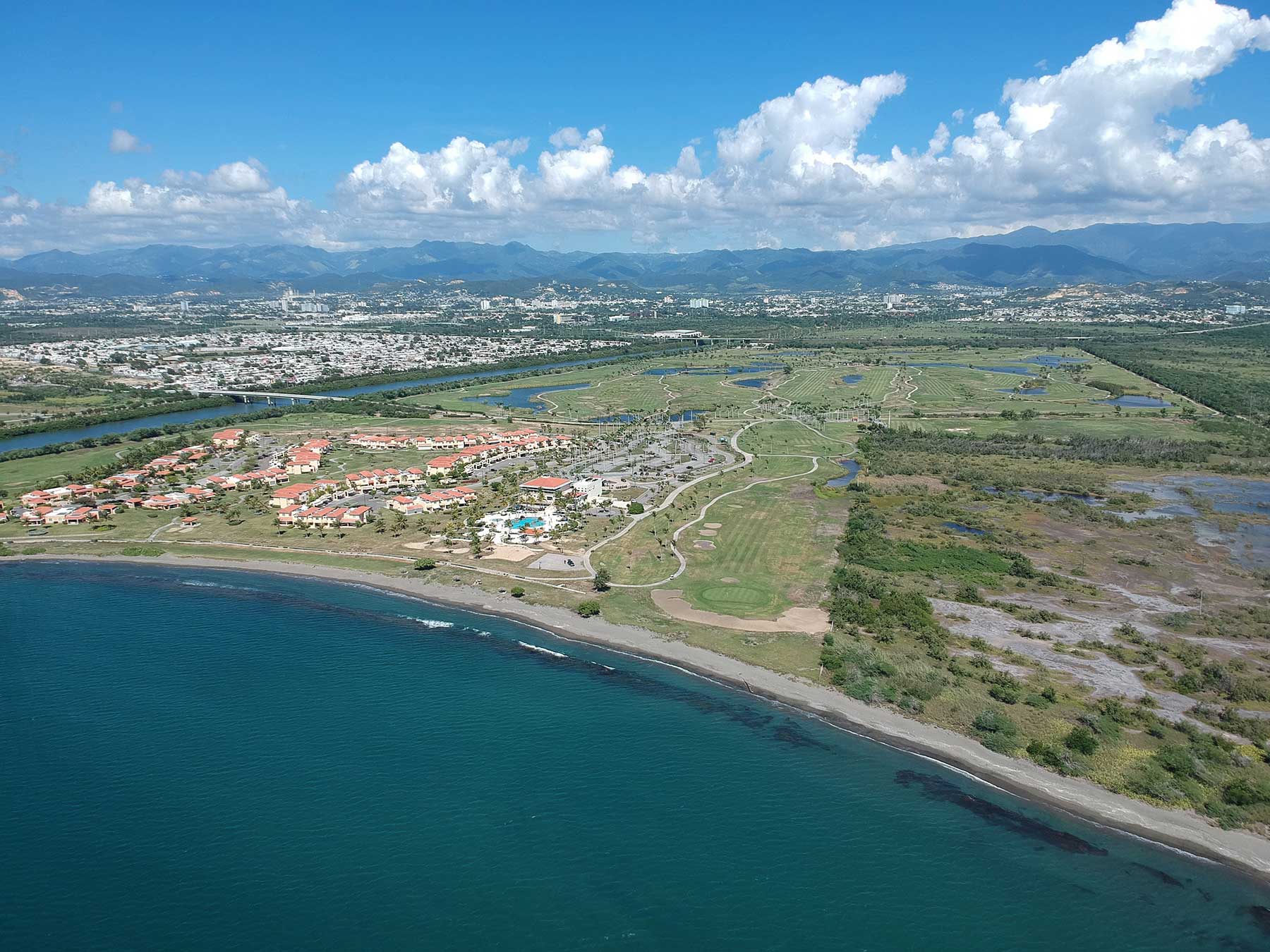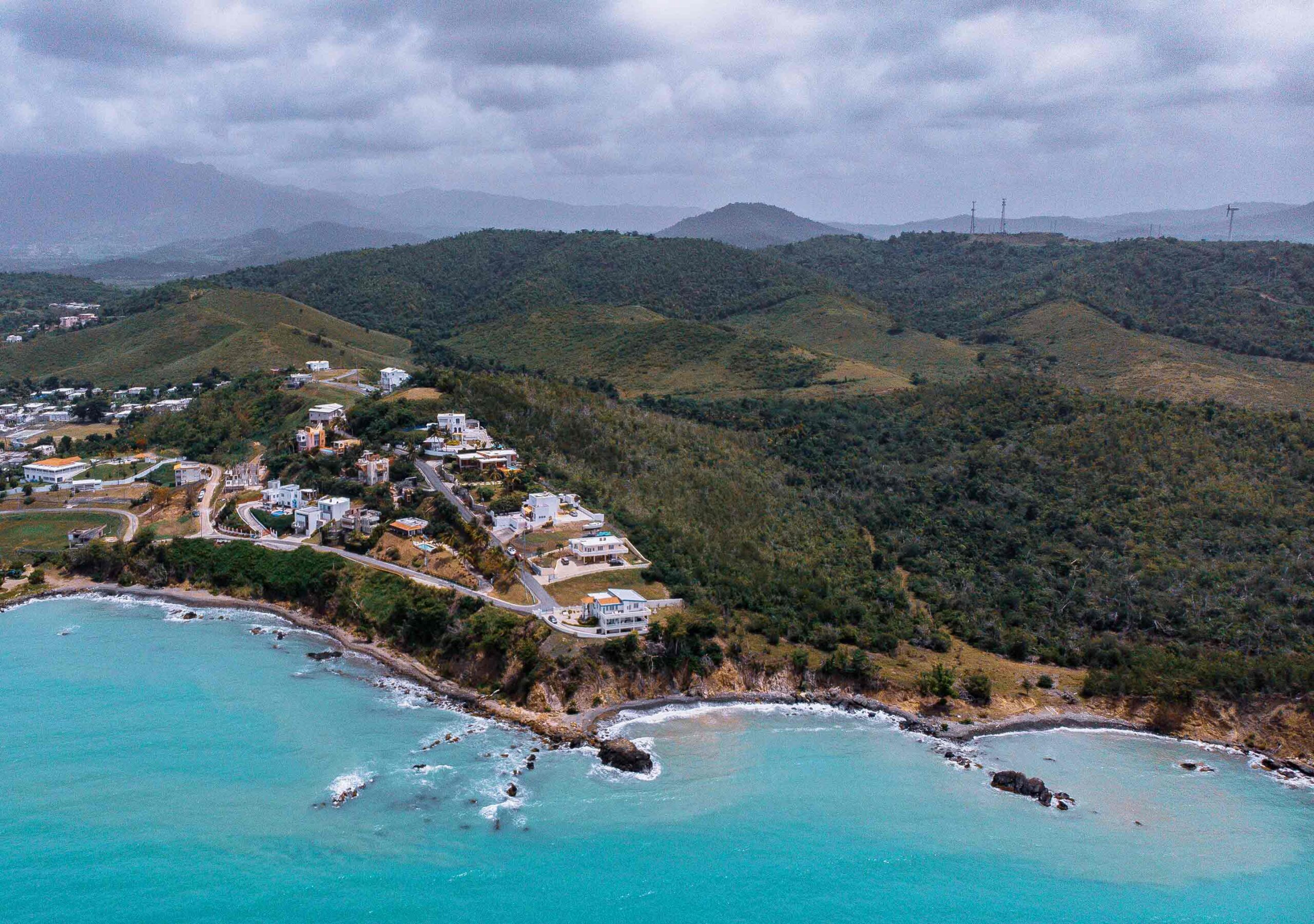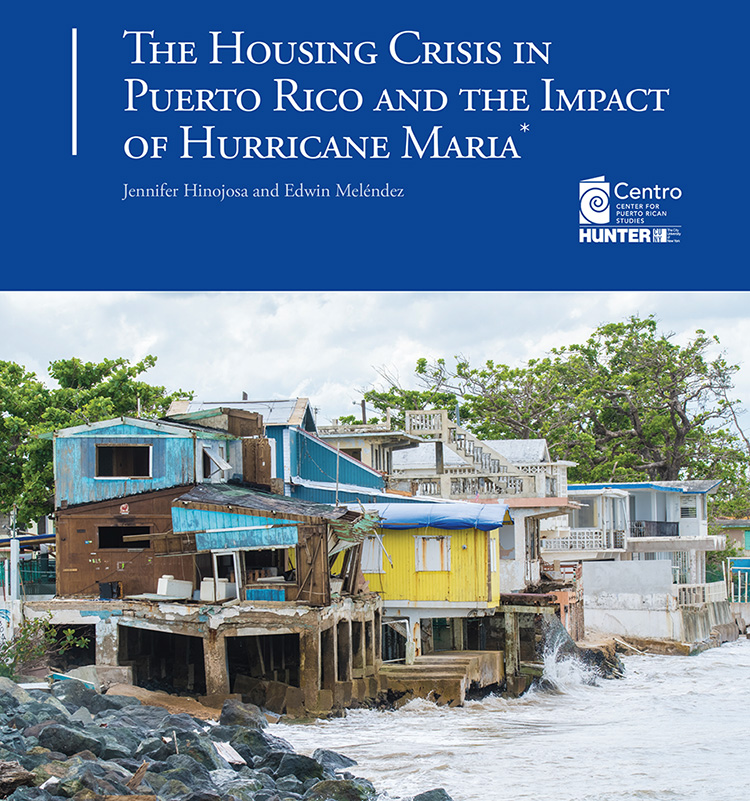October 1, 2019, New York City– The Puerto Rico Builders Association takes a big bite of the Big Apple at the 2019 Bisnow National Real Estate Finance Summit. The National Real Estate Finance Summit is one of the most esteemed, high-level, and best attended event in the nation. This year was no exception with over 300 attendees from finance, capital markets, financial advisory, private equity, and real estate.
The Puerto Rico panel included Ing. Emilio Colón Zavala, President of the Puerto Rico Builders Association/ ECZ Group, Eric Berman, Chief Investment Officer at Lifeafar, Jorge Ruiz-Montilla, Capital Member and Chairman of the Real Estate & Finance Practice Group at MCconnell Valdes, Philip Carroll, Director of Finance at Royal Palm Companies and Adam Greenfader, Managing Partner of AG&T.
Ethan Penner, best known for creating the CMBS market, key noted the event with insight on “high conviction investment themes.” The Puerto Rico panel drew much interest at the Finance Summit. “We were impressed to hear from the leaders of the financial markets in New York that they see Puerto Rico as a great opportunity, explained Emilio Colón Zavala. With less than 7% tourism GDP, there is room for 15,000 more hotel keys.’
Philip Carroll of Royal Palm Companies , concurred with the assessment of hospitality demand and explained some of the island’s competitive advantages in Puerto Rico including the ability to leverage Tourism Tax credits with Opportunity Zone incentives. Royal Palm is currently developing a 1,000 key hotel and marina resort on the island.

Pictured Left to Right: Adam Greenfader, Emilio Colon Zavala, Philip Caroll, Marcial Diaz
The panel received multiple questions throughout the presentation. Of particular interest, was the level of detail and financial sophistication about Act 20/22. Jorge Ruiz-Montilla explained some of the benefits of the laws and highlighted the island’s economic and political stability.
When asked, “Why now, why invest in Puerto Rico today”, the consensus of the group was clear…the numbers speak for themselves. “Puerto Rico posted positive economic growth in 2019 and is forecasting a 2.5% GDP for 2020. We clearly hit bottom and with Billions of CDBG-DR money coming to the island in the next few years, the time is now”, quoted Adam Greenfader, who moderated the Panel.
Lifeafar, a real estate investment and hospitality firm, recently expanded their operations from Medellin, Colombia to Puerto Rico. “Puerto Rico is a place you can make a real change. Our investors want to make a good return on investment but also know they are helping to make a difference”, quoted Eric Berman.
For more information about Puerto Rico,. You can join the Puerto Rico Builders Association on October 29-30 at their annual conference. See link attached. https://www.constructorespr.com/convencion/#eventbrite
About The Puerto Rico Builders Association
About AG&T









